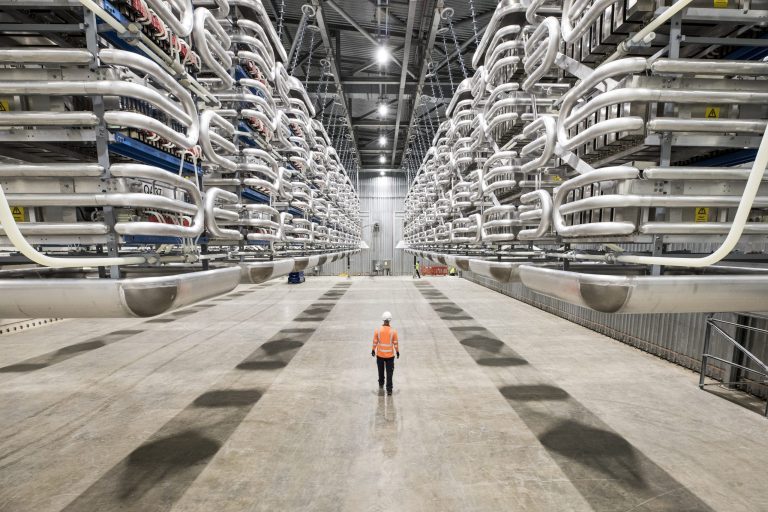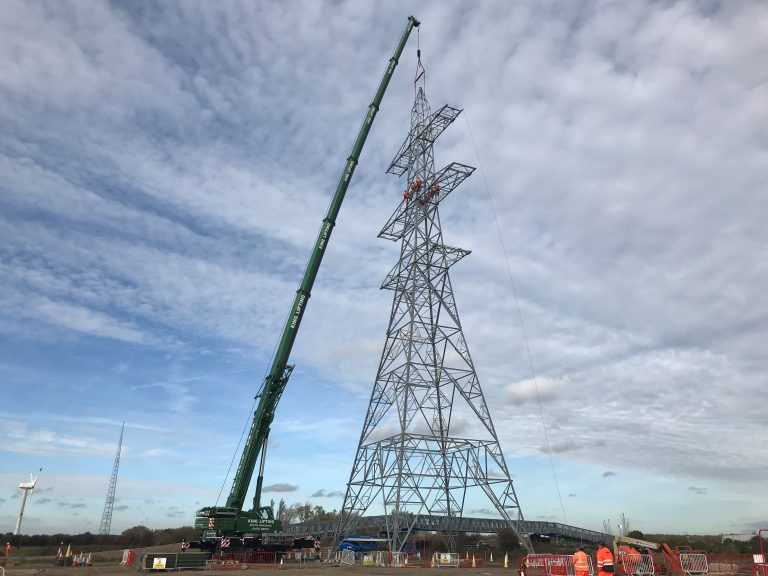IFA2, National Grid’s fourth interconnector, can provide enough clean energy from France to power 1 million British homes, avoiding 1.2 million tonnes (Mt) of CO2 emissions. By 2024, National Grid’s portfolio of interconnectors will provide enough zero carbon energy to power 8 million homes a year, avoiding a total of 100 million tonnes (Mt) of CO2 emissions by 2030. National Grid today launches Britain’s latest interconnector, IFA2. The 149-mile-long power cable runs along the sea bed between Portsmouth, Hampshire in the UK and near Caen, Normandy in France sharing surplus clean energy between the two countries. IFA2 is expected to deliver 1.2% of Britain’s electricity needs, enough to power up to 1 million homes with zero carbon energy. By the end of it’s first year in operation, IFA2 will have helped avoid 1.2 million tonnes (Mt) of CO2 from entering the atmosphere, equivalent to planting 50 million trees. IFA2 is the latest feat of engineering helping to transform Britain’s energy system. In the last decade, Britain’s power grid has decarbonised faster than that of any other developed country with a 64% decline in carbon emissions[1]. Interconnectors have played a critical role in this: every year, National Grid’s three existing interconnectors power the equivalent of 5 million homes with zero carbon energy. This will increase to the equivalent of 8 million homes a year by 2024, as a further three interconnectors are completed, avoiding a total of 100 million tonnes (Mt) CO2 emissions by 2030. That emission reduction equates to taking 2 million cars off the road. Furthermore, as the country’s renewable energy capacity, such as offshore wind, increases, interconnectors will enable Britain to sell any excess renewable energy to neighbouring countries. Despite the pandemic, IFA2 has remained on time and on budget. The 1,000 MW high voltage direct current (HVDC) electrical interconnector is National Grid’s second link to France and is the result of a shared £700 million investment, with partners RTE. UK Energy Minister Kwasi Kwarteng visits IFA2 today as it enters its energisation phase which allows electricity power to run through the cable ready for testing before going live. With the energisation of IFA2, National Grid now has four operational interconnectors – two to France (IFA and IFA2), one to the Netherlands (BritNed) and one to Belgium (Nemo Link). Two further projects are under construction – Norway (North Sea Link, operational 2021) and Denmark (Viking Link, operational 2023). Interconnectors allow the UK to trade clean energy with neighbouring countries, exporting it during times of excess generation, and vice versa. They play a critical role in the UK’s transition to clean energy resources – connecting the UK to hydropower in Norway, wind power in Denmark, and carbon-free nuclear power in France. Jon Butterworth, CEO of National Grid Ventures, said: “While the world is focused on the pandemic and managing the knock-on effects on our lives, we know that progress towards net zero can’t afford to falter and Britain needs to keep up the momentum in reducing harmful carbon emissions. The launch of the IFA2 interconnector, linking France and Britain’s power grids, is an important step in accelerating our progress to a cleaner, greener future.” Kwasi Kwarteng, Minister for Business, Energy and Clean Growth, said: “The opening of this IFA2 interconnector will provide enough clean electricity to power one million British homes so I am delighted to see this joint venture being launched. “Recent government commitments to the development of our offshore wind infrastructure show how the UK is a world leader in low-carbon energy generation and the IFA2 will allow us to share those benefits with our friends and neighbours in France.”









